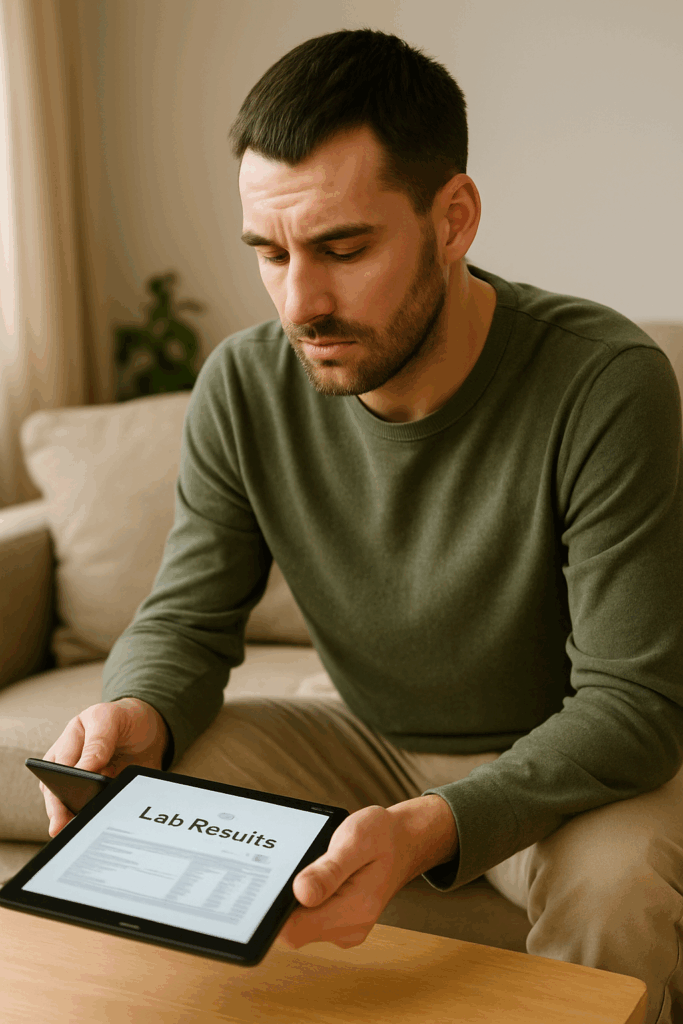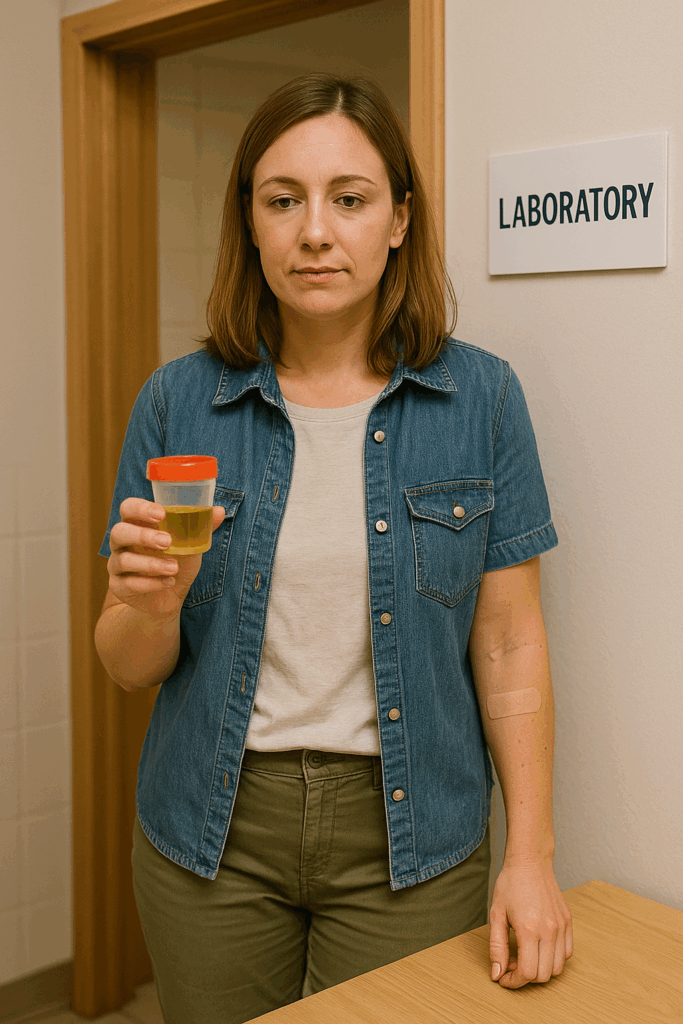
When the RESULTS Came In: My CKD Diagnosis Day
I didn’t expect the phone call. I had gone in for a routine physical—blood pressure check, cholesterol panel, the usual. But the next day, my doctor’s office called to schedule a follow-up to “discuss my labs.” That’s how I learned I had chronic kidney disease, or CKD.
At first, it felt like a wall of noise: “Your eGFR is below 60… some protein in your urine… nothing urgent, but something to follow.” I left that appointment confused, a little afraid, and wondering what these kidney lab results actually meant. So, I turned to my care team—and to NatuRenal—for clarity.
This guide is what I wish I had that first week. If you or someone you love is facing a new CKD diagnosis, this is your place to start.
What Does My Renal Function Panel Mean?
The first thing I looked up was my renal function panel, sometimes just called the kidney panel. Mine had red flags next to a few numbers. That’s when I realized I didn’t know what any of it meant.
Here’s what I learned, in plain language:
- eGFR (estimated glomerular filtration rate): This is the big one. It estimates how well your kidneys are filtering waste. A number over 90 is considered normal. Mine was 53—stage 3a CKD. That sounds scary, but it actually meant I still had more than half of my kidney function.
- Creatinine: A waste product your kidneys should clear. High levels can mean the kidneys aren’t filtering well—but creatinine also varies with muscle mass. Mine was a little elevated, but that fit my eGFR.
- BUN (blood urea nitrogen): Another waste product marker. Mine was high-normal—not urgent, but something to monitor with hydration and diet.
What surprised me most? These results didn’t mean I was in danger—they meant I had an opportunity to take control before things got worse.

Beyond Blood: My Urine Test Results Made Me Pause
Until now, I had never thought much about urine tests. But for CKD, urine protein levels tell a crucial part of the story. My doctor ordered a urine albumin-creatinine ratio (ACR) and a protein-creatinine ratio (UPC).
Here’s what I found out:
- Urine ACR (albumin-creatinine ratio): This checks for albumin, a small protein that sneaks through damaged filters. Mine was 38 mg/g. That’s considered moderately increased. Not ideal—but not the worst-case scenario either.
- UPC (urine protein-creatinine ratio): Measures all types of protein in urine. Mine was just above the threshold for concern.
What did that mean? My kidneys were leaking small amounts of protein—a sign of early damage. But again, not irreversible. My doctor explained how controlling my blood pressure, avoiding NSAIDs, and considering an ACE inhibitor might help. Naturenal’s educational content helped me understand this wasn’t about panic—it was about precision.
My PTH, Uric Acid, and CBC Look Off—But That’s Not Always a Bad Thing
This section was the trickiest for me—because when I looked at my full blood panel, a few things were flagged as “abnormal” that my doctor said not to worry about. That felt contradictory… until I learned the bigger picture.
- PTH (parathyroid hormone): Mine was mildly elevated. Turns out, that’s not unusual in CKD. As kidney function declines, your body starts adjusting calcium and phosphate levels through PTH. My doctor said it’s something to track, not treat yet.
- Uric Acid: Mine was high. I worried about gout, but since I had no symptoms, and no history of stones, we decided to just monitor it.
- CBC (complete blood count): My hemoglobin was slightly low. Mild anemia is common in CKD, but again, not all cases require treatment. In my case, we chose watchful waiting.
Lesson learned? CKD shifts the goalposts. Not all “abnormal” values are dangerous. My care team reminded me: numbers are data points—not verdicts. Context is everything.
Learning to Read My Lab results—Not Fear Them
In the beginning, I saw lab results as judgment. Now, I see them as feedback—a kind of language my body uses to speak to me.
What changed?
- I started tracking trends, not fixating on one bad value.
- I asked my provider to explain why we were—or weren’t—acting on certain numbers.
- I used NatuRenal’s resources to understand how lifestyle fits into lab management: nutrition, hydration, movement, even mindfulness.
Understanding my kidney labs has become part of how I care for myself. It’s not about being perfect—it’s about being engaged. I’ve learned that you can live well with CKD, and knowledge really is power.

Next Steps
If you’ve just received your first abnormal kidney labs, here’s what helped me most:
- Don’t panic. Many CKD cases are manageable and stable for years.
- Ask your doctor for copies of your labs. Learn the terms.
- Use trusted resources (like NatuRenal!) to guide your understanding.
- Bring a loved one to appointments if you feel overwhelmed.
- Keep asking questions until you feel informed—not just labeled.
You’re not alone in this. I’m walking the path too. And trust me—it gets easier.
Let’s keep going. Let’s keep learning. Together.
CKD DIagnosis insights
This YouTube short video helps demystify the CKD diagnosis.
Disclaimer: This content is for educational purposes only. It is not intended to diagnose, treat, cure, or prevent any disease. Always consult your healthcare provider before making any changes to your health routine.
